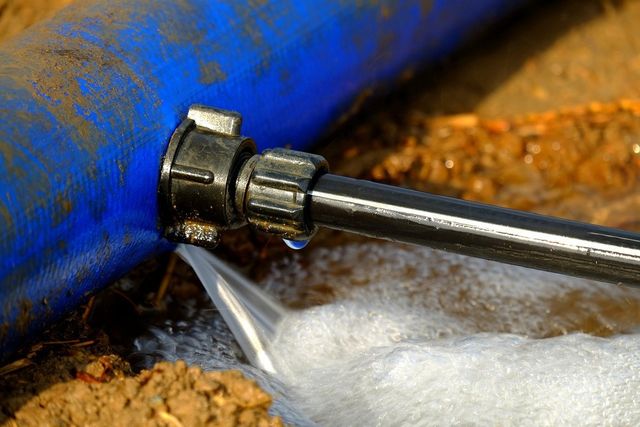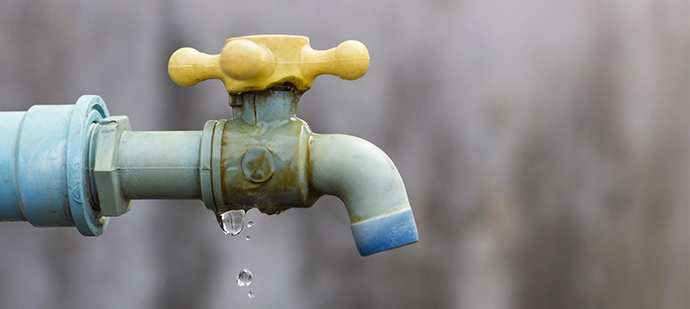Six Methods to Detect Covert Water Line Leaks Efficiently
Six Methods to Detect Covert Water Line Leaks Efficiently
Blog Article
On this page in the next paragraph you'll find a good deal of reliable data when it comes to Leaking water lines.

Early discovery of dripping water lines can reduce a possible disaster. Apart from saving you money, it will reduce the aggravation as well as frustration. The moment you find a leakage, calling your plumber for repair work is the most effective service. Some little water leakages might not be noticeable. If you can not spot it with your nude eyes, right here are some hacks that aid.
1. Examine the Water Meter
Every residence has a water meter. Inspecting it is a proven manner in which helps you find leaks. For beginners, turn off all the water sources. Guarantee nobody will certainly purge, utilize the faucet, shower, run the cleaning maker or dish washer. From there, most likely to the meter as well as watch if it will change. Since no person is utilizing it, there must be no motions. If it moves, that indicates a fast-moving leak. If you detect no modifications, wait a hr or two as well as inspect back again. This implies you may have a slow-moving leakage that might also be below ground.
2. Check Water Usage
If you detect unexpected changes, regardless of your usage being the same, it suggests that you have leaks in your plumbing system. An abrupt spike in your expense shows a fast-moving leakage.
On the other hand, a stable rise every month, despite the same routines, reveals you have a slow leak that's additionally gradually escalating. Call a plumber to completely check your residential or commercial property, specifically if you really feel a cozy area on your floor with piping beneath.
3. Do a Food Coloring Examination
When it comes to water consumption, 30% comes from toilets. If the color somehow infiltrates your dish throughout that time without flushing, there's a leakage between the container as well as dish.
4. Asses Exterior Lines
Do not fail to remember to check your exterior water lines too. Test faucets by affixing a garden hose pipe. Needs to water permeate out of the link, you have a loosened rubber gasket. Change this and also make certain all connections are limited. If you have actually got an automatic sprinkler, it will help get it professionally took a look at as well as kept each year. One small leakage can throw away lots of water and spike your water costs.
5. Examine as well as Assess the Scenario
Homeowners need to make it a behavior to examine under the sink counters and even inside cabinets for any bad odor or mold development. These two red flags suggest a leak so timely attention is required. Doing routine evaluations, even bi-annually, can save you from a significant trouble.
A lot more significantly, if you know your home is already old, keep a watchful eye on your heating systems, pipes, pipes etc. Check for stainings as well as weakening as many pipelines and devices have a life expectancy. They will also naturally deteriorate due to wear and tear. Do not wait for it to rise if you presume leaking water lines in your plumbing system. Call a professional plumber right now so you don't wind up with a horrible mess in your home.
Early discovery of leaking water lines can mitigate a prospective catastrophe. Some little water leakages may not be noticeable. Inspecting it is a surefire method that assists you discover leakages. One small leakage can lose heaps of water as well as spike your water costs.
If you think dripping water lines in your plumbing system, don't wait for it to rise.
WARNING SIGNS OF WATER LEAKAGE BEHIND THE WALL
PERSISTENT MUSTY ODORS
As water slowly drips from a leaky pipe inside the wall, flooring and sheetrock stay damp and develop an odor similar to wet cardboard. It generates a musty smell that can help you find hidden leaks.
MOLD IN UNUSUAL AREAS
Mold usually grows in wet areas like kitchens, baths and laundry rooms. If you spot the stuff on walls or baseboards in other rooms of the house, it’s a good indicator of undetected water leaks.
STAINS THAT GROW
When mold thrives around a leaky pipe, it sometimes takes hold on the inside surface of the affected wall. A growing stain on otherwise clean sheetrock is often your sign of a hidden plumbing problem.
PEELING OR BUBBLING WALLPAPER / PAINT
This clue is easy to miss in rooms that don’t get much use. When you see wallpaper separating along seams or paint bubbling or flaking off the wall, blame sheetrock that stays wet because of an undetected leak.
BUCKLED CEILINGS AND STAINED FLOORS
If ceilings or floors in bathrooms, kitchens or laundry areas develop structural problems, don’t rule out constant damp inside the walls. Wet sheetrock can affect adjacent framing, flooring and ceilings.
https://www.servicemasterbyzaba.com/blog/how-to-detect-water-leakage-in-walls/

I ran across that content on Top leak detection hacks when doing a search on the internet. Please take a moment to distribute this blog post if you liked it. I thank you for reading our article about Finding hidden leaks.
Toilet issues? Call! Report this page